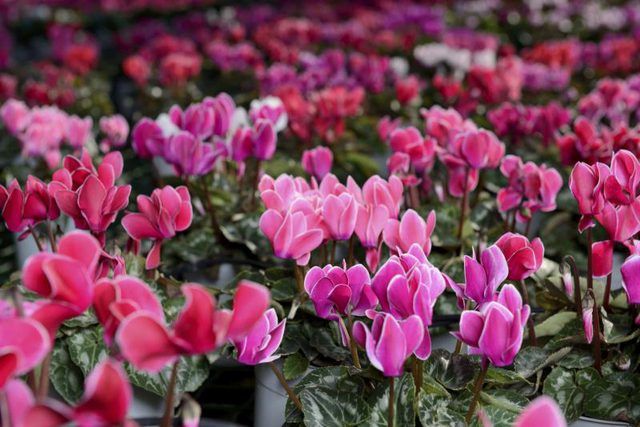Bulbs
Flower Basics
Flower Beds & Specialty Gardens
Flower Garden
Garden Furniture
Garden Gnomes
Garden Seeds
Garden Sheds
Garden Statues
Garden Tools & Supplies
Gardening Basics
Green & Organic
Groundcovers & Vines
Growing Annuals
Growing Basil
Growing Beans
Growing Berries
Growing Blueberries
Growing Cactus
Growing Corn
Growing Cotton
Growing Edibles
Growing Flowers
Growing Garlic
Growing Grapes
Growing Grass
Growing Herbs
Growing Jasmine
Growing Mint
Growing Mushrooms
Orchids
Growing Peanuts
Growing Perennials
Growing Plants
Growing Rosemary
Growing Roses
Growing Strawberries
Growing Sunflowers
Growing Thyme
Growing Tomatoes
Growing Tulips
Growing Vegetables
Herb Basics
Herb Garden
Indoor Growing
Landscaping Basics
Landscaping Patios
Landscaping Plants
Landscaping Shrubs
Landscaping Trees
Landscaping Walks & Pathways
Lawn Basics
Lawn Maintenance
Lawn Mowers
Lawn Ornaments
Lawn Planting
Lawn Tools
Outdoor Growing
Overall Landscape Planning
Pests, Weeds & Problems
Plant Basics
Rock Garden
Rose Garden
Shrubs
Soil
Specialty Gardens
Trees
Vegetable Garden
Yard Maintenance
How to Care for a Cyclamen
How to Care for a Cyclamen. Cyclamen (Cyclamen spp.) offer nicely marked, often heart-shaped leaves and showy flowers with swept-back petals. Native to the Mediterranean area, about 20 species exist. To suit their native climates of wet winters and dry summers, cyclamen have a summer dormancy. They grow from a brown tuber, sometimes mistakenly...

Cyclamen (Cyclamen spp.) offer nicely marked, often heart-shaped leaves and showy flowers with swept-back petals. Native to the Mediterranean area, about 20 species exist. To suit their native climates of wet winters and dry summers, cyclamen have a summer dormancy. They grow from a brown tuber, sometimes mistakenly called a corm. Two commonly grown cyclamen are hardy cyclamen (Cyclamen hederifolium) and florist's cyclamen (Cyclamen persicum).
Watering Requirements
One of the common problems in cyclamen plant care is overwatering. The plants need moisture when they are actively growing but shouldn't be kept soggy. Water the plants thoroughly and let the soil or mix partially dry out before again watering thoroughly. For potted plants, water should run out the drainage holes. During summer dormancy, don't water cyclamen. If potted plants are in a peat-based mix, give just enough water to keep the mix from completely drying out and becoming hard. To rehydrate peat mixes, try adding a few drops of liquid dish-washing detergent meant for hand-washing dishes to the water to help it penetrate better. Resume watering when plants break dormancy in the fall. Leaves appear first on florist's cyclamen, with flower production as early as December. In hardy cyclamen, the flowers emerge before or along with the new leaves in September to October. In late spring, withhold water when leaves become yellow in advance of dormancy.
Frost Protection
Freezing weather harms most cyclamen species, including florist's cyclamen, which is hardy in U.S. Department of Agriculture plant hardiness zones 9 through 11. In cold winter climates, florist's cyclamen is growing and blooming during the coldest parts of the year and needs to be indoors. The plant requires cool temperatures when growing, between 55 to 60 degrees Fahrenheit. This can be difficult to supply in modern, centrally-heated homes. Hardy cyclamen is one of the most cold-tolerant species, growing in USDA zones 5 through 9. You can mulch the corms in winter.
Pruning and Fertilizing
Cyclamen don't need pruning, although you may want to remove the dead or dying leaves from potted plants entering dormancy. Give a sharp tug to yellowing leaves to cleanly remove them from the top of the tuber. Because the tuber stores nutrients for the plants, cyclamen don't need much fertilizer. You may wish to give potted plants a diluted liquid fertilizer every two weeks during active growth, but too much fertilizer causes lush growth and fewer flowers. Use a product approximating a 10-5-2 N-P-K ratio, adding 5 to 10 drops per 1 quart of water.
Potential Problems
Mice and squirrels can eat the tubers of plants in the garden, especially when they're dormant. Be aware of digging activities in areas where cyclamens grow, and protect the tubers by temporarily covering the area with hardware cloth. The main danger to all cyclamens is onset of rot because of overwatering. Indoor plants can sometimes get cyclamen mite infestations, causing discolored or wilted flowers and puckered, curled leaves. Kill the mites by immersing infested plants, pot and all, for 15 minutes in water heated to 109 degrees Fahrenheit.